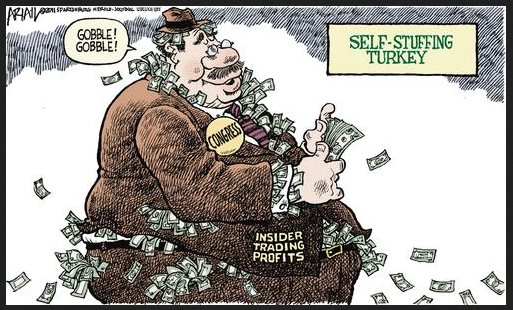The Opportunity: Innovation Upside
Revision: 1.2
We, as partner plaintiffs, own the exclusive priority and rights in law suits with hard metrics proving over $1B in damages and lost profits. We find for innovation rights and the “good guys” in David V. Goliath opportunities.
Our proof of big ticket damages in these cases is rock solid. Part of that proof comes from the opposing parties (called “the defendants” in legal parlance) who posted those numbers in federal filings. Additional proof now comes from the many recent, and ongoing, internet document leaks.
It costs from a low-end of $120,000.00 to a high-end of $1.2M to prosecute cases like these through to recovery of attractive sums. The costs include legal travel, copying, attorney hours, investigators, depositions and expert witnesses.
Investor Peter Thiel recently covered a case which took in a $140M judgment in exchange for a much, much smaller investment.
We have won federal law suits. Set national legal precedents and have access to top tier law firms who will bid against one another for a chance at a pre-financed case.
We have pre-sued the Defendants with “trial balloon” cases and forced them to reveal their defense strategies. We work with FBI/CIA/NSA/Senate-level investigation resources to legally surveillance and business-intelligence-overview (BIO) all of the soft spots in the Defendants cumulative corporate profiles.
You invest in the case and receive up to 60% of the winnings, contingent on the deal terms. You can’t get that kind of ROI on The Street!
Defendants include entities such as Sony Pictures, Google, SAP and other entities with fully credentialed assets.
Cases take two to three years to resolve. For comfort, though, we advise investors to plan on a 4 year window to the exit.
Investing in litigation – Second-hand suits
Fat returns for those who help companies take legal action
NEW YORK | From THE ECONOMIST
COMPANIES need to make the best returns on the assets they have in hand. But what if a company does not know that it has them, or whether it can use them? In some cases a lawsuit could be a valuable earner. A technology company in liquidation might have a patent-infringement suit that the bankruptcy’s administrators lack the time to pursue. There may be money to be made by suing a joint-venture partner, but the prospect of a costly case dissuades managers from going to court.
Enter “third-party funders”. These outside investors offer to pay for a lawsuit, in exchange for a share of the payout: from 30% to 60%. Some lawyers work on contingency (“no win, no fee”) arrangements, but others cannot shoulder the risk. So third-party funders may get involved.
Returns are impressive enough to have drawn in both hedge funds and traditional financial companies. Allianz, a German insurer, built a profitable lawsuit-funding unit before running into conflicts of interest with suits aimed at its insurance customers. It closed shop. Credit Suisse built and then spun off its litigation-finance unit, now called Parabellum (the Latin for “prepare for war”.)
The potential profits can be seen in the results of three public companies that specialise in funding litigation: Burford and Juridica, both listed in London but focusing on America, and IMF, the first public litigation funder, based in Australia. Juridica, which released results on March 15th, made $38m in cash profits on $256m under investment. Juridica concentrates on monetising court wins and settlements, and immediately returning the cash to shareholders. Last year it offered the highest dividend yield on London’s AIM market, which specialises in smaller companies.
The biggest risk, says Richard Fields, Juridica’s founder and chief executive, is not the quality of cases. He says the company invested in 30 of some 1,200 it considered, and has profited from all that have been concluded. The risk is timing: courts’ gears grind slowly before suddenly producing results, so cashflow is “lumpy”.
Burford, though a year younger, is bigger than Juridica, and funds a wide spectrum of cases. It boasts a 61% net return on invested capital in 2012. Christopher Bogart, its co-founder and boss, says that chief financial officers understand when he describes lawsuits as assets: “I’m not talking about doing anything different with litigation than they’re talking about doing with photocopiers and aeroplanes.”
Some worry that funding others’ lawsuits is unethical. A common-law prohibition against “maintenance” and “champerty” used to forbid outsiders from meddling in lawsuits or taking cuts from judgments. But such rules have loosened. Lord Jackson, a former judge asked in 2009 by the British government to review civil-law costs, has praised outside funding.
America, with its astronomical legal costs, has other worries. Robert Weber, IBM’s general counsel, wrote in February that third-party funding was “the latest gimmick in a headlong rush to degrade legal professionalism”. America’s Chamber of Commerce, a business lobby, fears that funding will encourage junk lawsuits. But John Peysner of the University of Lincoln sees “no evidence at all” to justify such concerns. Steven Garber, an economist at RAND, a think-tank, says the economics of filing low-merit cases make little sense. The best business is in unlocking good cases that otherwise might not be filed, rather than in funding a slew of uncertain ones in the hope that some are settled for their “nuisance value”, or that a few big wins pay for the rest.
For now, demand for outside funding outstrips supply. The global litigation-finance industry is probably worth more than $1 billion today. But only a small part of all litigation is funded by outsiders. That proportion looks likely to grow.


